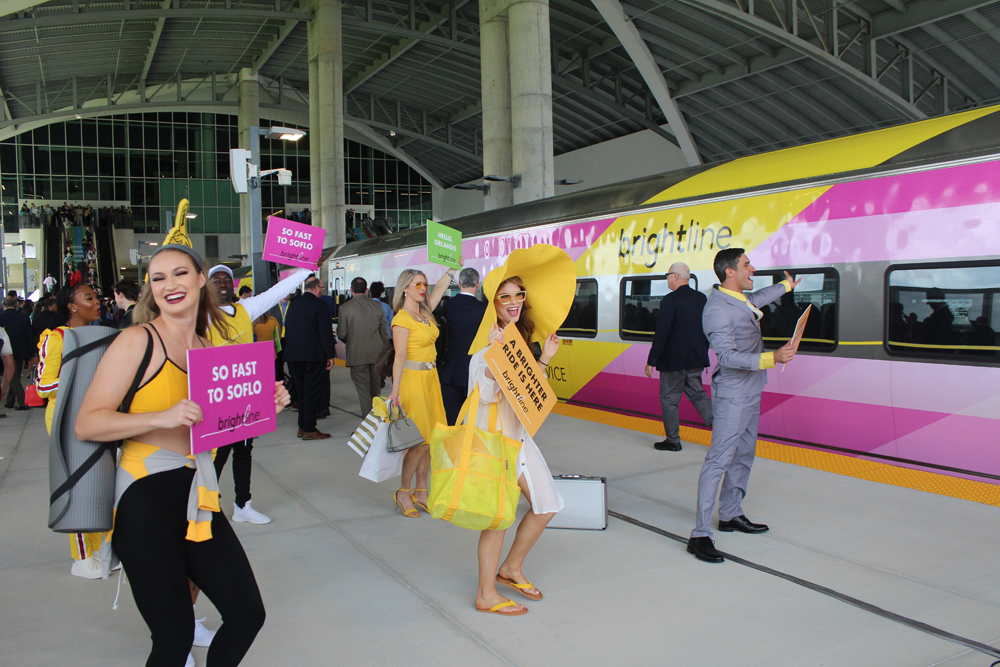
ORLANDO — One year after Brightline initiated hourly service from South Florida to Orlando International Airport on Sept. 22, 2023, five new “Smart” coaches are beginning the cross-country journey from their birthplace at Siemens’ Sacramento, Calif., factory.
They are the first batch of another 30 cars, 20 “Smart” and 10 “Premium” coaches, that will help the innovative operator capture more revenue and patronage by next summer. Trains News Wire spoke with Brightline’s Chief Mechanical Officer Tom Rutkowski and President Patrick Goddard this week for their candid assessments on the first year of operation and what’s ahead.
Capacity expansion
Brightline currently operates a daily 16 round-trip schedule between Orlando and Miami with 10 four-car trainsets. Some time in October after the five coaches now in transit arrive, are commissioned, and have colored decals applied to their stainless steel carbody shells, the tenth trainset will be split up. Including the arriving five coaches, this will allow one coach to be added to the remaining trainsets.
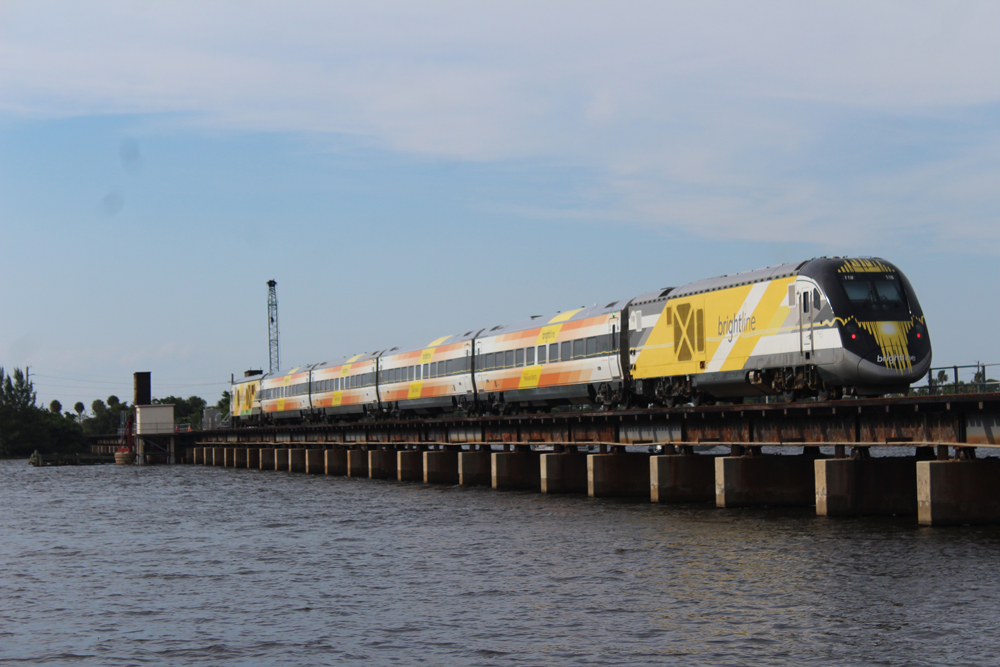
With 9 five-car trains instead of 10 four-car trains, Brightline will temporarily reduce daily departures from 16 to 14 round trips until the next 5 coaches arrive in Florida from Siemens in late December. Frequencies will then again revert to 16 round-trips in early 2025. Rutkowski plans to have preparation and dynamic testing at the Orlando “Basecamp” maintenance facility completed in five days. “The coach-baggage car at one end of each train will now become Car 5 and the additional coach will be Car 4,” he says. Departures where patronage is expected to be light will be selectively withdrawn from Brightline’s ticketing website weeks in advance to minimize rebookings.
Once another 10 Smart and 10 Premium coaches arrive in the summer, each of the 10 consists generating 16 round trips will have seven cars sandwiched between the two Charger locomotives: 5 Smart and 2 Premium coaches. To keep deliveries on schedule and achieve incentives Brightline has offered, Rutkowski tells News Wire Siemens has designated one of its Sacramento buildings for exclusive Brightline production.
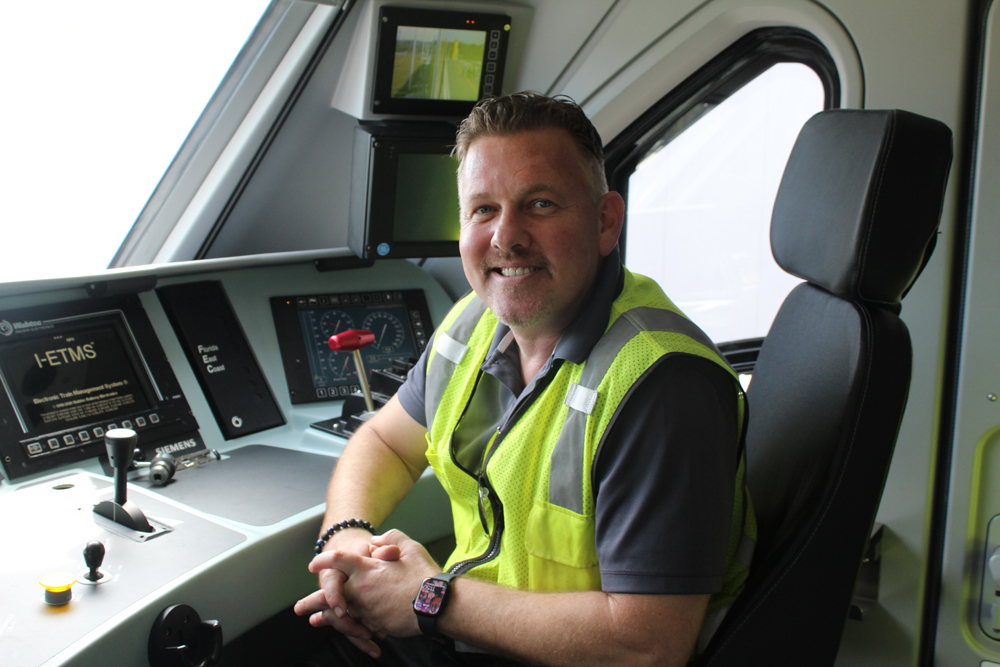
Reliability secrets
Asked how the company managed to keep its fleet operating with minimum disruptions when other operators have had well-publicized failures with Charger locomotives, Rutkowski credits several factors.
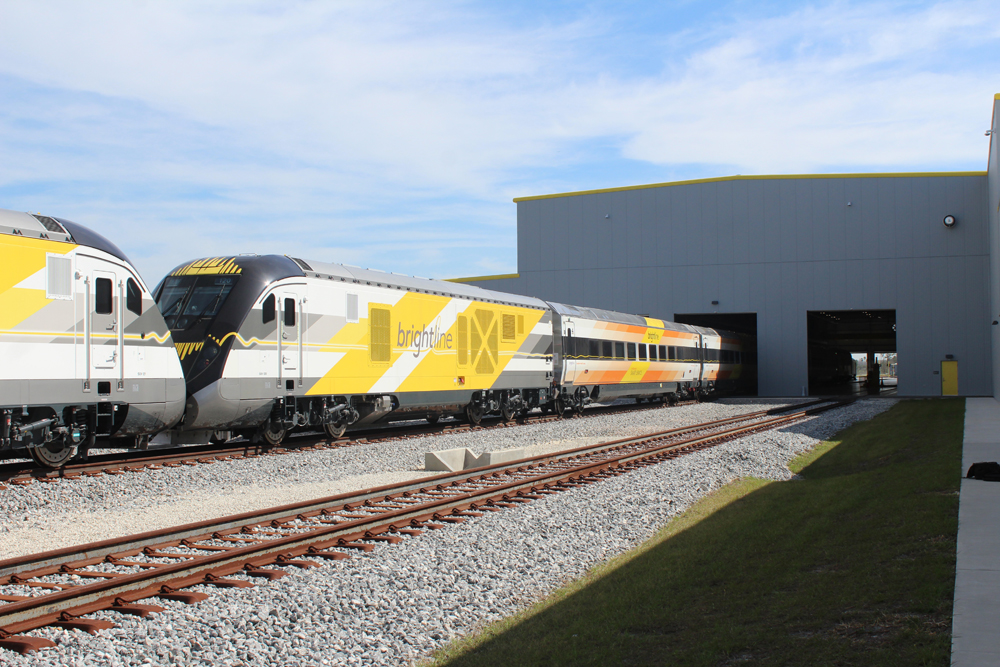
“First, the trainsets come ‘home’ every night. One is always out of service for maintenance, 7 spend the night at Basecamp in Orlando, and two layover at our West Palm Beach facility. Second, we minimize idling; we run them hard, then shut them down when they are not operating and put trainsets on ground power.” During a Miami layover, for instance, the engines will automatically shut down after 20 minutes unless air pressure or battery voltage drops too low. Periodic maintenance is spread out up to a year in advance, “to make sure we have the necessary maintenance windows,” Rutkowski says, adding “There is no Plan B; we’re just on it every day and have to have the same level of diligence.” Siemens has the maintenance contract but the two companies’ employees work side-by-side. “Our uniforms are identical, the only difference is the name on the back,” he says.
Goddard looks back and ahead
“We’ve done this without a blueprint,” Brightline President Patrick Goddard candidly admits, “so we’ve had to feel our way measuring success and in some cases failure, getting feedback from our guests and our 600 teammates and adjusting along the way.”
A big challenge is how the Orlando and South Florida demand patterns play with each other [see “Brightline monthly revenue steady as riders shift to longer trips: Analysis,” News Wire Aug. 16, 2024]. “We learned the demand is quite similar, so we’re still thinking about how we can better meet that short haul demand. The answer is capacity; the question is how much,” Goddard says, which he hopes the addition of 30 coaches will accomplish.
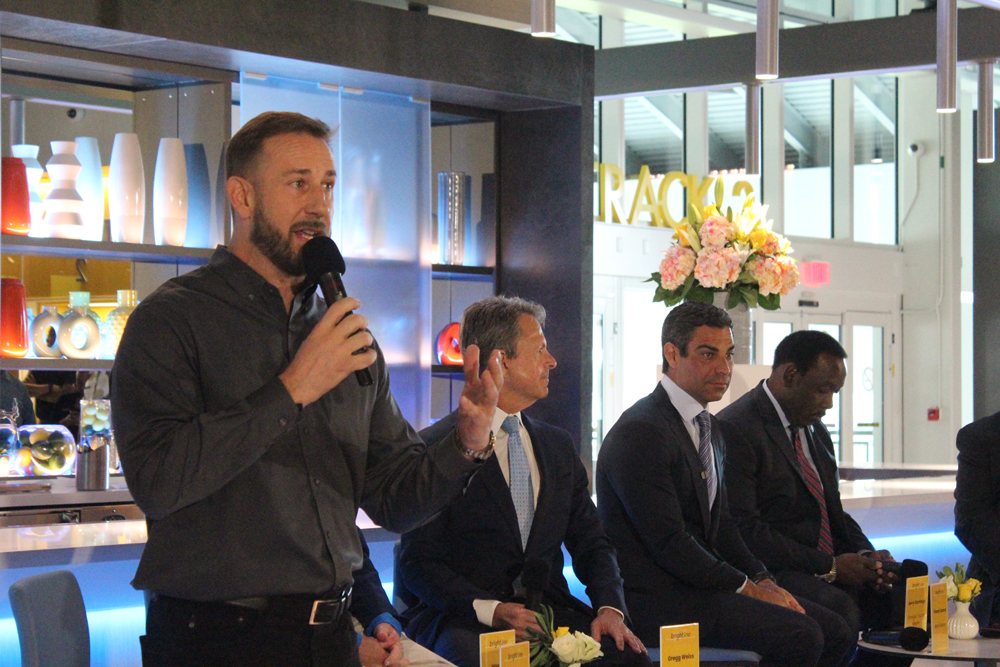
Some service aspects have evolved, such as the initial option of including local trips to and from Brightline stations in the ticketing process. “We found people are capable of booking their own Uber, rather than us trying to control the experience; it’s just better to put that control with a third party provider into the guest’s hand,” he contends. The company is planning to incorporate links to those options on an upcoming app modification and has “doubled down” on shuttles to the Miami and Fort Lauderdale airports and special events.
Goddard says Brightline has attempted to elevate its station and onboard food and beverage offerings, and will soon be rolling out an “order at seat” option so passengers won’t have to wait for a cart to come around.” The Orlando expansion has meant having to accommodate more luggage, “so we’re looking for ways to make it easier to carry it and opportunities to check oversize bags,” he says.
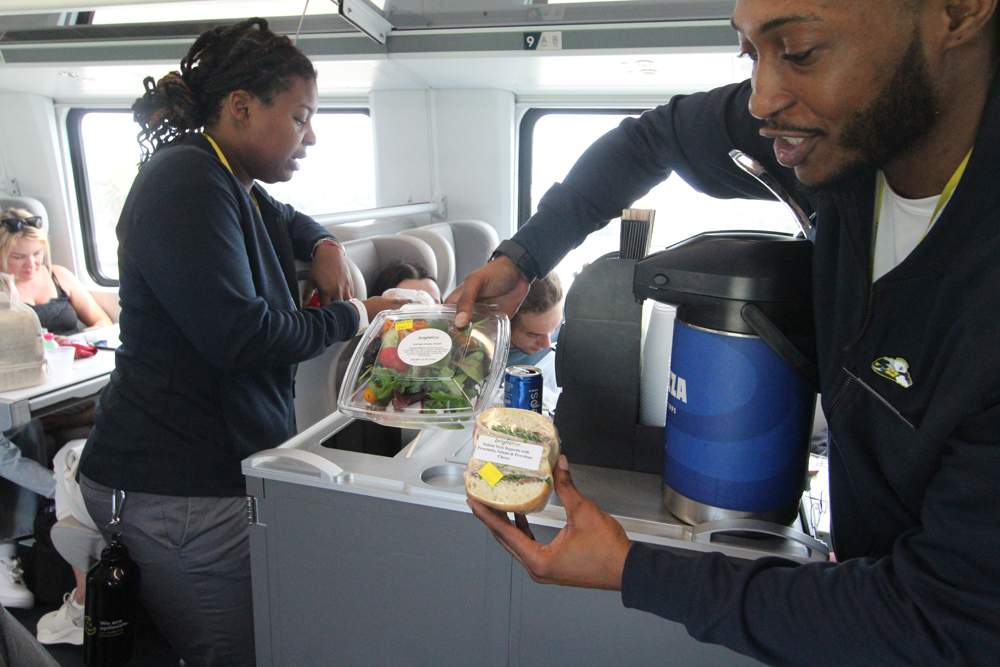
Regarding the lack of capacity’s impact on market penetration, Brightline’s president notes “half of our guests every month are new to the system, so we are still going through acceptance and we are hesitant to jack prices up too soon. It does happen on some trains,” he adds, “and the top quartile of our long haul passengers are paying over $100 one-way. There’s no issue with commanding that price with repeat customers, but we want to make sure people know that with advance purchase or off-peak trips, they can get on a Brightline train to Orlando for 30 bucks. This is the job we have to do [with more capacity] over the next year,” Goddard says.
Other challenges to be addressed are parking congestion at the Orlando airport and the never ending quest for new customers. Strategically-placed billboards and new partnerships with global distribution systems that can package flights and cruises with trains promise to increase awareness. And near-daily “reasons to ride” emails to passengers who have ridden previously will soon be augmented with a loyalty program.
“We’ve found people appreciate the hourly service and have learned how to book it,” Goddard says, “but let’s remember, this is only the first year.” He concludes, “We’re not perfect, but we’ve put a lot of time, effort, and money delivering a first class product and I think that is something others can learn from, including ourselves, as we construct the first U.S. high-speed rail system between Las Vegas and Southern California.”
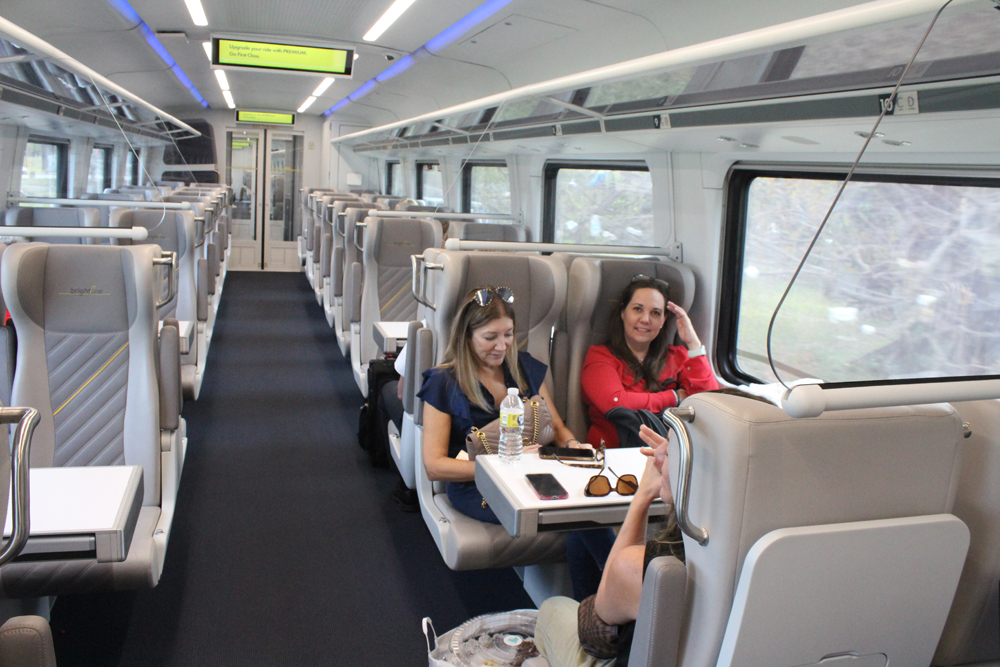














I was amazed when announced the plan for Brightline. A private company reintroducing passenger service. I’ve ridden it twice since I live in C. FL. Only complaint; I can see wraping the cars for revenue from advertising, but NOT covering the windows.
Can hardly see out in the wraped trains.
What an amazing concept–add more cars to carry more passengers!!! Amtrak, are you listening?
Don’t forget that Brightline is essentially running on its own rails and a lot newer infrastructure. The same will be for Brightline West. A huge difference when the owner of the rails cares about 2-3 mile long freight trains vs Amtrak offering reliable passenger service.
Can’t let Amtrak off the hook either. Amtrak has a long ways to go but the northeast corridor is running on century old and older bridges and tunnels that is handling what 3 to 4 to 5 times the number of trains in some stretches. Brightline is literally running a portion of its trains that is not even 5 years old.
Another interesting comparison between Brightline and Amtrak is buying, receiving, testing and then quick acceptance of cars for daily ops. Brightline can, Amtrak can’t. I have heard that the long delayed new Acela trainsets (at least some) may be in service by the end of 2024. We’ll see.
Go Brightline!
It is revealed the stainless steel car bodies of Brightline’s trainsets are not painted, but covered with decals to provide their unique colours. This raises the question on rather the Siemens coaches built for Amtrak and Via Rail Canada are painted or applied decals.
There was a discussion on Reddit about BL’s real estate activity.
https://www.reddit.com/r/Brightline/comments/1db5c5c/what_is_brightlines_plan_with_real_estate/
It appears both Alan and Al forget a couple of things…one, Amtrak is at the mercy of Congress purse strings and two Brightline is actually counting on the real estate holdings they have surrounding a several of the stations to generate even more money. It might appear to be a passenger service first, real estate second, but that is far from the truth if you had read the proxy statements sent out with the bond sales.
Actually Amtrak has already started trying to leverage their amassed holdings in real estate they inherited from the host railroads.
Look back at the story where Amtrak attempted to build a high rise right in the middle of Chicago Union Station. The effort bombed due to their misguided idea of covering the windows of the great hall, but you get the idea. They have been working to sell more air rights over their respective land holdings. In Chicago alone, you can still see down into some of the below ground yards from above. It is most notable around 5PM when all the trains are backing in for rush hour and diesel fumes can be seen rising.
Boston South Station is owned by the Commonwealth of Massachusetts. A couple of years back, TRAINS MAG reported on the air rights construction. Which I assume the state negotiated a good price. Last Friday I arrived at and later left from the station. I can report that the needs of passengers are reasonably (but not perfectly) looked after, which is more than can be said at other locations where major downtown terminals have become magnets for office towers.
If Chicago LaSalle Street Station is zero on a scale of one to a hundred, I’d give Boston South Station about a sixty-five.
It would be enlightening when Gardner is next before congress for a very hard questioning would be made for why Amtrak could not attract at least 1/2 of these riders to Amtrak before Brightline.
Amtrak, pay attention; this is how you run a successful passenger rail business.
No ifs, ands, buts, or excuses.